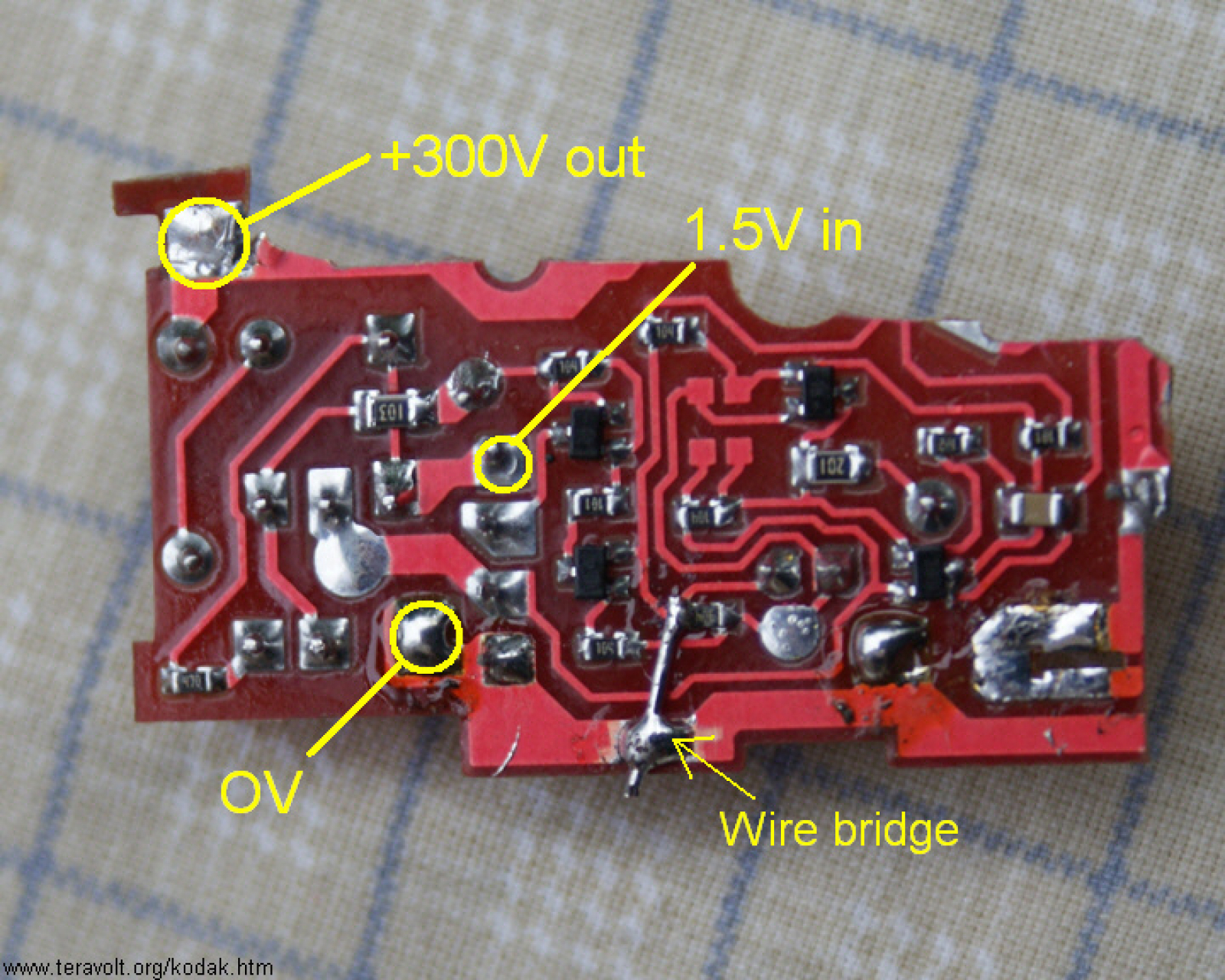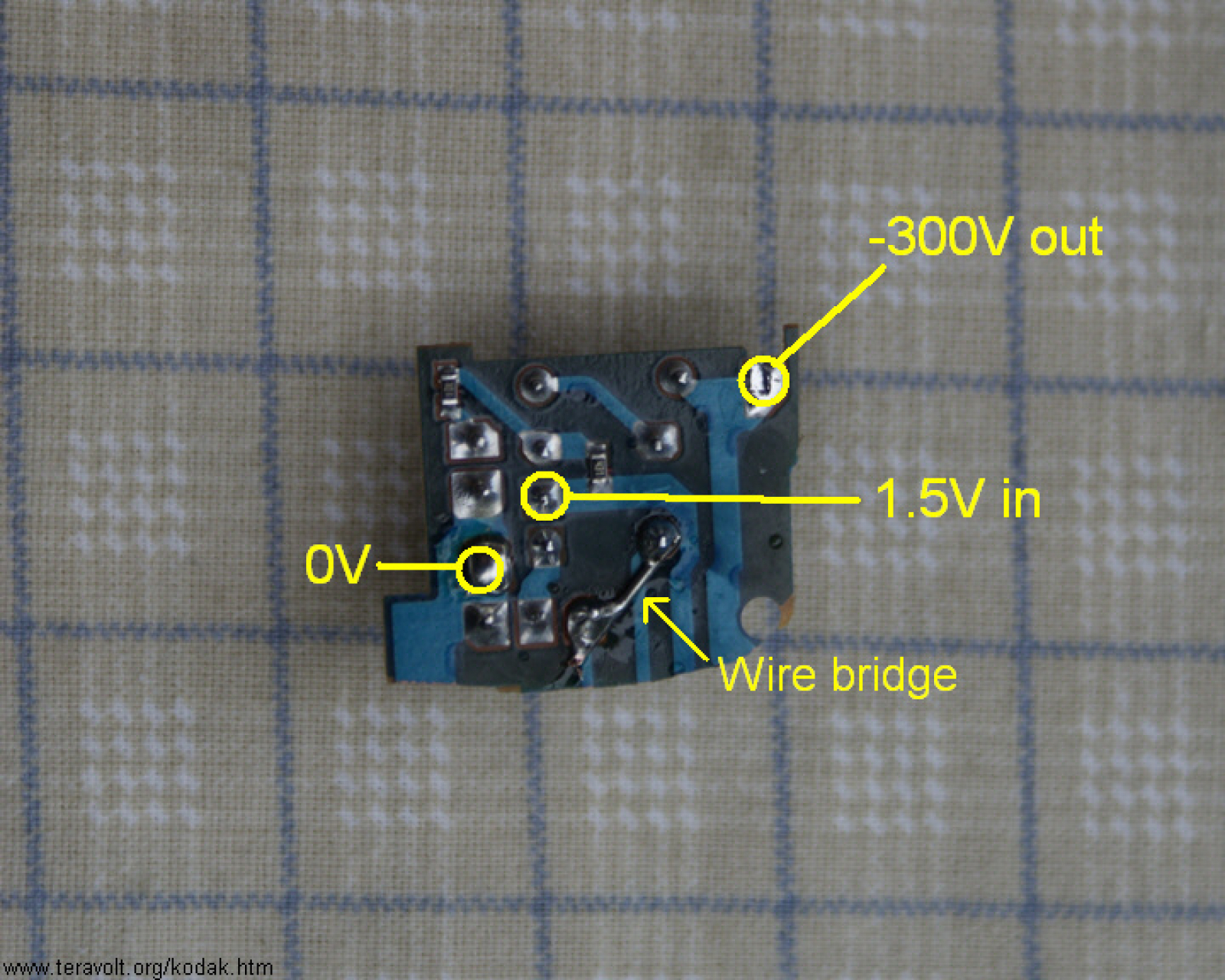Kodak Flash Circuits
Disposable cameras are a great source of moderately high voltage inverters. The flash circuit takes 1.5V and turns it into anywhere from 300 to 350 volts, and what's nice about these cameras is that you can go to any pharmacy, and if you ask nicely, they'll give a whole bunch to you. They also have some low esr pulse capacitors inside them too, something you could make a mini coilgun out of. These circuits are best used for charging capacitors since they were designed to do that in the first place, though they make quite a nice shocker when a 100nF cap is rigged up to them.


The Circuits
I found that the Kodak ones are the best and most reliable, and I figured out ways that they can be "minified". Unfortunately all of these circuits only boast about 15% efficiency, so don't expect batteries to last very long when using them.To the left are the four different circuit boards Kodak uses in their cameras. It's a lottery as to which camera contains which one, as "disposable" cameras get reloaded at the factory. Some of these circuits may be a decade or more old, and it's a wonder that they live that long when they are so cheaply made. Only three of these ones are any good; the red, blue, and yellow. I've had nothing but bad luck with the green one as it tends to die easily and will only work if it's connected to a capacitor.The yellow and red ones supply +300V while the blue and green ones supply -300V. I'm not sure why they decided to change that, but luckily for us if a yellow one and a blue one are powered from the same battery a difference of about 600V is made! The blue circuits can also be put in parallel for more current for faster charging of a capacitor, but they yellow ones refuse to play nice. I'm not sure why the yellow ones won't work well in parallel.
Minification
I previously mentioned that these circuits can be minified, meaning that a whole bunch of junk can be cut off leaving the small inverter behind. Two of these, the yellow and blue, can be ultra-minified.
